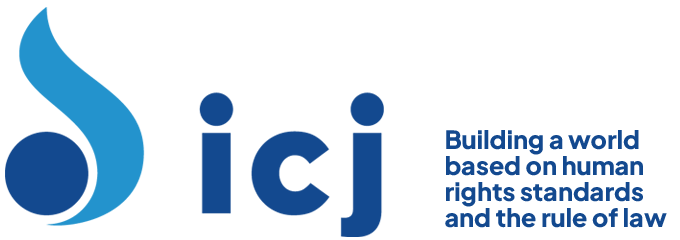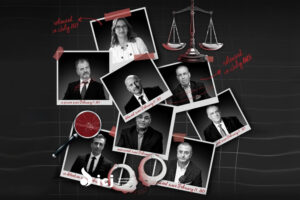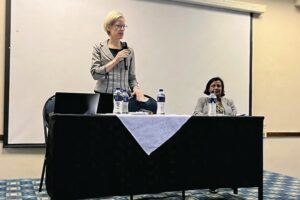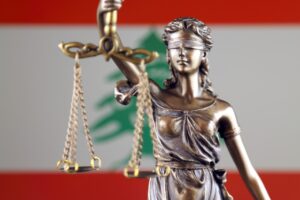III. A gender perspective on countering terrorism
B. Gender, equality and non-discrimination in international human rights law
20. Gender is not synonymous with women but rather encompasses the social constructions that underlie how women’s and men’s roles, functions and responsibilities, including in relation to sexual orientation and gender identity,{{1}} are defined and understood. {{2}} This report will therefore identify the gendered impact of counter-terrorism measures both on women and men, as well as the rights of persons of diverse sexual orientations and gender identities. As a social construct, gender is also informed by, and intersects with, various other means by which roles, functions and responsibilities are perceived and practiced, such as race, ethnicity, culture, religion and class. Consequently, gender is not static; it is changeable over time and across contexts. {{3}} Understanding gender as a social and shifting construct rather than as a biological and fixed category is important because it helps to identify the complex and inter-related gender-based human rights violations caused by counter-terrorism measures; to understand the underlying causes of these violations; and to design strategies for countering terrorism that are truly non-discriminatory and inclusive of all actors.
21. International human rights law, including the Convention on the Elimination of All Forms of Discrimination against Women, the International Covenant on Civil and Political Rights, and the International Covenant on Economic, Social and Cultural Rights, requires States to ensure non-discrimination and equality (de jure and de facto) on the basis of gender, sex, sexual orientation and gender identity, {{4}} as well as to address instances where gender inequality intersects with other prohibited grounds of discrimination, such as race, colour and religion.{{5}} These guarantees of non-discrimination and gender equality are particularly integral to ensuring the enjoyment of economic, social and cultural rights, {{6}} which are often adversely impacted by counter-terrorism measures. {{7}} In the light of the extent to which counter-terrorism measures curtail the claims of asylum-seekers, it is also important to note that international refugee law provides protection against gender-related persecution, including through refugee claims relating to sexual orientation and gender identity, within the context of article 1A(2) of the 1951 Convention and/or its 1967 Protocol relating to the Status of Refugees.{{8}}
C. Gendered targeting and militarization
23. Those subject to gender-based abuses are often caught between targeting by terrorist groups and the State’s counter-terrorism measures that may fail to prevent, investigate, prosecute or punish these acts and may also perpetrate new human rights violations with impunity. This squeezing effect is present for example, in Algeria, where women have been arrested and detained as potential terrorists after they report sexual violence and humiliation by armed Islamists. {{9}} In Nepal, the counter-insurgency campaign that was defined with reference to terrorism was characterized by attacks on meti (effeminate males or transgender persons) by both sides, with reports that the Maoists were abducting meti {{10}} and the police were taking advantage of the counter-terrorism environment to attack meti as part of a “cleansing” of Nepali society.{{11}} A recent report by Amnesty International exemplifies the extent to which women may be targeted by all entities, noting that in Iraq, “crimes specifically aimed at women and girls, including rape, have been committed by members of Islamist armed groups, militias, Iraqi government forces, foreign soldiers within the US-led Multinational Force, and staff of foreign private military security contractors. Most of these crimes have been committed with impunity”. {{12}} The gender dimensions of these abuses are explicit: “Women and girls are being attacked in the street by men with different political agendas but who all want to impose veiling, gender segregation and discrimination”.{{13}} When States fail to prevent, investigate and punish gender-based violence by government actors or terrorist groups they embolden such attacks and legitimatize gender inequality.
D. Gender and overly broad definitions of terrorism
27. The breadth of Governments’ counter-terrorism measures have resulted in significant gender-based human rights violations. In many instances, Governments have used vague and broad definitions of “terrorism” to punish those who do not conform to traditional gender roles and to suppress social movements that seek gender equality in the protection of human rights. For example, Governments have alleged terrorism links to justify the arrest and persecution of “suspected ‘homosexuals’” {{14}} and regularly accuse women’s human rights defenders of being members of terrorist groups. {{15}} As well as being discriminatory, the latter criminalizes activities that are protected by the guarantees of freedom of opinion, expression and association in the International Covenant on Civil and Political Rights{{16}} and exposes women’s human rights defenders to gender-specific forms of abuse and harassment at the hands of government. {{17}}
M. Restrictive immigration controls, asylum procedures and trafficking
48. Counter-terrorism measures disproportionately affect women and transgender asylum- seekers, refugees and immigrants in specific ways. For example, enhanced immigration controls that focus attention on male bombers who may be dressing as females to avoid scrutiny{{18}} make transgender persons susceptible to increased harassment and suspicion.{{19}} Similarly, counter-terrorism measures that involve increased travel document security, {{20}} such as stricter procedures for issuing, changing and verifying identity documents, risk unduly penalizing transgenderpersons whose personal appearance and data are subject to change. {{21}} This jeopardizes the right of persons of diverse sexual orientations and gender identities to recognition before the law. In this regard, the Yogyakarta Principles on the application of international human rights law in relation to sexual orientation and gender identity identify that States must “ensure that procedures exist whereby all State-issued identity papers which indicate a person’s gender/sex … reflect the person’s profound self- defined gender identity”. {{22}}
IV. CONCLUSIONS AND RECOMMENDATIONS
A. Conclusions
52. In accordance with his mandate defined by the Human Rights Council, the Special Rapporteur has integrated a gender perspective throughout his work. This report expands upon earlier reports of the Special Rapporteur to provide a comprehensive overview of the frequency and nature of gender-based human rights abuses in counter-terrorism measures and to explore the complex relationship between gender equality and countering terrorism. Gender is not synonymous with women, but rather it encompasses the social constructions that underlie how women’s and men’s roles, functions and responsibilities, including in relation to sexual orientation and gender identity, are defined and understood. While many of the dimensions of the theme of this report relate to the human rights of women, and violations thereof, gender-based violations of the human rights of male persons have also been addressed. Moreover, the human rights of lesbian, gay, bisexual, transgender and intersex individuals have required particular attention in the context of a human rights assessment of gender and counter-terrorism.
B. Recommendations
53. The Special Rapporteur submits the following recommendations to Member States:
…
(b) To undertake all appropriate measures to investigate, document and monitor the gendered impacts of counter-terrorism measures on women and lesbian, gay, bisexual, transgender and intersex individuals, including in reporting to inter- governmental organizations;
(c) To end impunity for all direct and collateral gender-based human rights violations in the name of countering terrorism, including economic, social and cultural rights violations, and provide redress for victims, including through reparations schemes that are non-discriminatory and equality-enhancing and provide recognition for all forms of gendered harms, including for victims targeted on the basis of sexual orientation and gender identity;
…
(e) To ensure that counter-terrorism measures do not extend to target or impede activities that do not constitute terrorism, such as the exercise of the right to freedom of peaceful assembly and association by women’s and lesbian, gay, bisexual, transgender and intersex human rights defenders;
…
(l) To take all necessary legislative, administrative and other measures to prevent, investigate and punish the use of torture and cruel, inhuman or degrading treatment or punishment in the name of countering terrorism, perpetrated on the basis of the sexual orientation or gender identity of the victim;
(m) To ensure that the rights of women and persons of diverse sexual orientations and gender identities are never used as a bartering tool to appease terrorist or extremist groups;
[[1]]1. See HCR/GIP/02/01.[[1]]
[[2]]2. A/59/38 (Supp.), annex I.[[2]]
[[3]]3. See Gender Mainstreaming: Strategy for Promoting Gender Equality (Office of the Special Adviser to the Secretary-General on Gender Issues and Advancement of Women, August 2001).[[3]]
[[4]]4. See Convention on the Elimination of All Forms of Discrimination against Women (General Assembly resolution 34/180, annex I, arts. 2 and 3); International Covenant on Economic, Social and Cultural Rights (General Assembly resolution 2200A (XXI), annex I, arts. 2 and 3); International Covenant on Civil and Political Rights (A/63/16); Committee on Economic, Social and Cultural Rights, General Comment No. 20, para. 32 (E/C.12/GC/20) (noting that “Other status” as recognized in article 2, paragraph 2, includes sexual orientation and that gender identity is recognized as among the prohibited grounds of discrimination); Organization of American States AG/RES/2504 (XXXIX-O/09); Yogyakarta Principles on the application of international human rights law in relation to sexual orientation and gender identity.[[4]]
[[5]]5. See A/59/38 (Supp.), annex I, para. 12; E/C.12/2005/4; Committee on the Elimination of Racial Discrimination (A/55/18, annex V).[[5]]
[[6]]6. See E/C.12/GC/20, para. 2.[[6]]
[[7]]7. See A/HRC/6/17.[[7]]
[[8]]8. See UNHCR Guidance Note on Refugee Claims Relating to Sexual Orientation and Gender Identity (Office of the United Nations High Commissioner for Refugees (November 2008)); HRC/GIP/02/01.[[8]]
[[9]]9. A/HRC/7/6/Add.2.[[9]]
[[10]]10. United Nations Children’s Fund, Situation of Children and Women in Nepal (Aug. 2007).[[10]]
[[11]]11. Human Rights Watch, Nepal: Police Attack Transgender People (17 April 2005); Human Rights Watch, Nepal: “Sexual Cleansing” Drive Continues (16 March 2006).[[11]]
[[12]]12. Amnesty International, Trapped by Violence — Women in Iraq, 3, AI Index MDE 14/005/2009 (March 2009).[[12]]
[[13]]13. Ibid.[[13]]
[[14]]14. Women Living Under Muslim Laws, “Egypt: Trial of 52 men jailed because of their alleged sexual orientation continues” (23 October 2001).[[14]]
[[15]]15. Megan Cossey, “Female Asian Activists Feel Singled Out for Attack”, Women’s eNews (4 December 2006).[[15]]
[[16]]16. A/62/263 para. 66.[[16]]
[[17]]17. Megan Cossey, “Female Asian Activists Feel Singled Out for Attack”, Women’s eNews (4 December 2006).[[17]]
[[18]]18. United States Department of Homeland Security, DHS Advisory to Security Personnel, No Change in Threat Level (4 September 2003).[[18]]
[[19]]19. See generally Sylvia Rivera Law Project, “The impact of the war on terror on LGBTSTQ communities”.[[19]]
[[20]]20. See A/62/263, para. 37.[[20]]
[[21]]21. See Sylvia Rivera Law Project, “The impact of the war on terror on LGBTSTQ communities”.[[21]]
[[22]]22. Yogyakarta Principles on the application of international human rights law in relation to sexual orientation and gender identity, principle 3.[[22]]
Link to full text of the report: Report-SRCounterT-2009-eng



